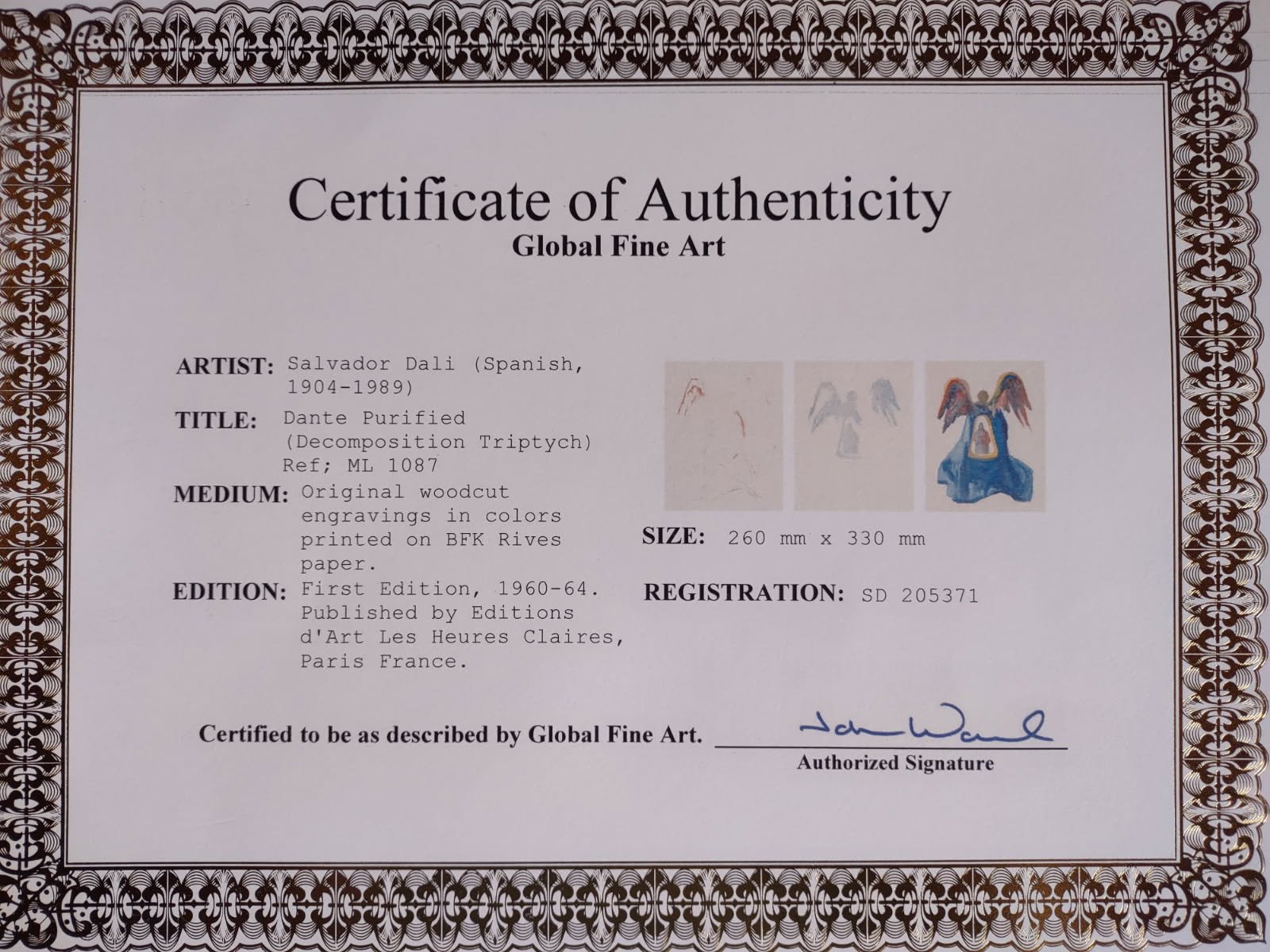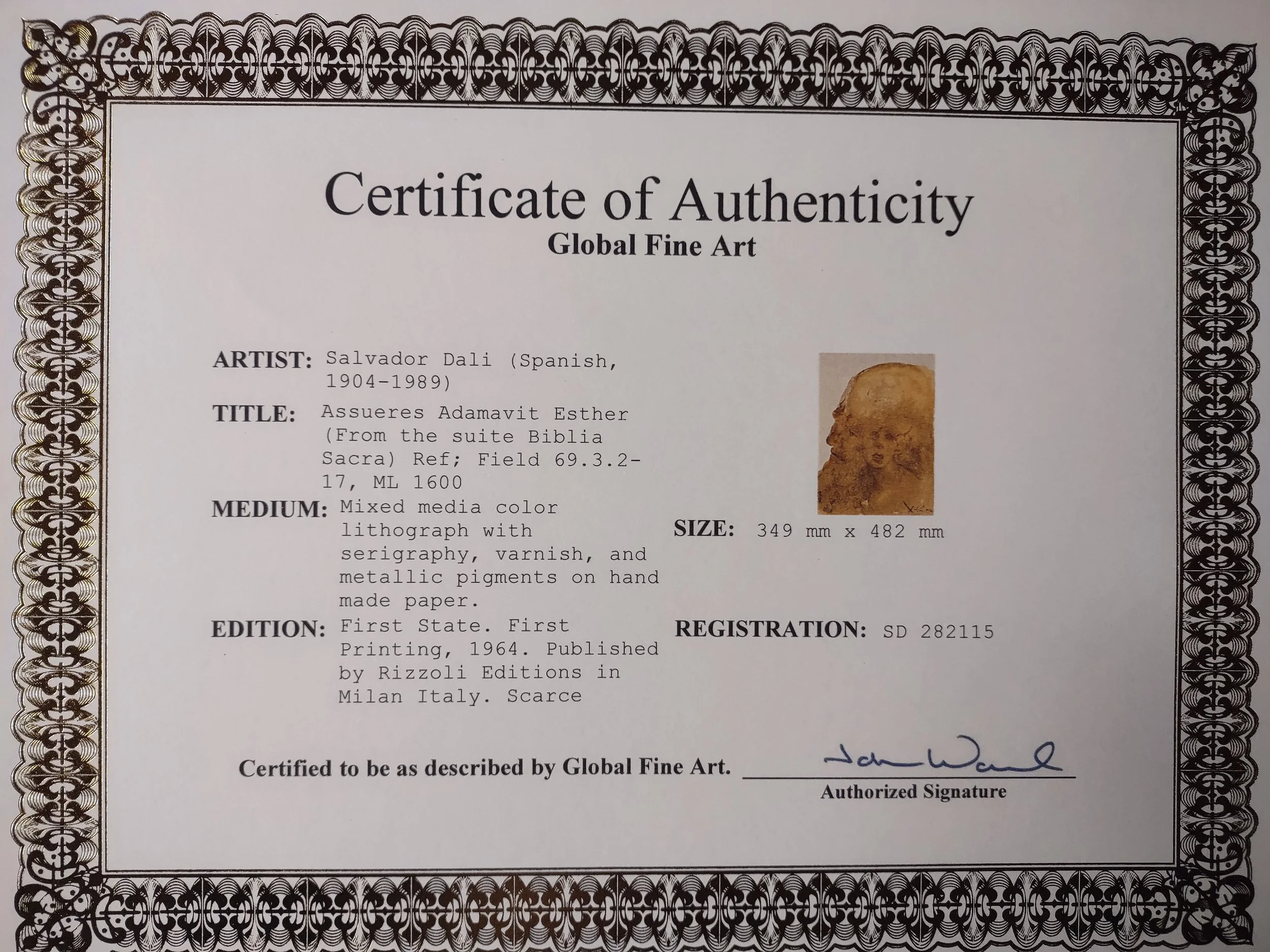Dante Alighieri’s “The Divine Comedy” remains an unparalleled masterpiece in the annals of world literature, a magnum opus that guides readers through the allegorical realms of Hell, Purgatory, and Paradise. Written in the 14th century, this epic poem is revered for its imaginative vision, complex moral allegories, and profound theological inquiry. It is a journey that transcends mere narrative, inviting readers into a meticulously crafted universe that blends the real with the surreal, the human with the divine. The poem’s vivid imagery and Dante’s intricate depiction of the afterlife have captivated scholars and artists alike for centuries.
Dalí’s response to Dante’s vivid descriptions of Heaven, Hell, and Purgatory was a series of 100 striking watercolors, each a testament to his extraordinary ability to translate the ethereal and abstract into stunning visual form. This project was not just an artistic endeavor but also a technical marvel. Under Dalí’s meticulous guidance, these watercolors were skillfully transformed into wood engravings, utilizing an astounding 3,500 blocks. This intricate process, a blend of artistic vision and technical prowess, spanned nearly five years.
Each segment of this triptych — Inferno, Purgatorio, and Paradiso — is imbued with Dalí’s unique surrealistic touch. In Inferno, he captures the fiery depths and tormented souls with a vibrancy that almost leaps off the canvas. Purgatorio represents a transitional realm, with imagery that combines elements of anguish and hope. Paradiso is depicted as a realm of celestial beauty, where light and ethereal forms dominate the landscape. Together, these works not only depict Dante’s allegorical universe but also offer a deep dive into Dalí’s own imaginative prowess.
Regarded as perhaps Dalí’s most significant contribution to graphic arts, this collection stands as a monumental achievement in the fusion of classical literature with avant-garde artistry. We are proud to host this exceptional series in the Print Room this summer, offering a unique opportunity to experience a harmonious blend of literary genius and surrealistic interpretation.

























